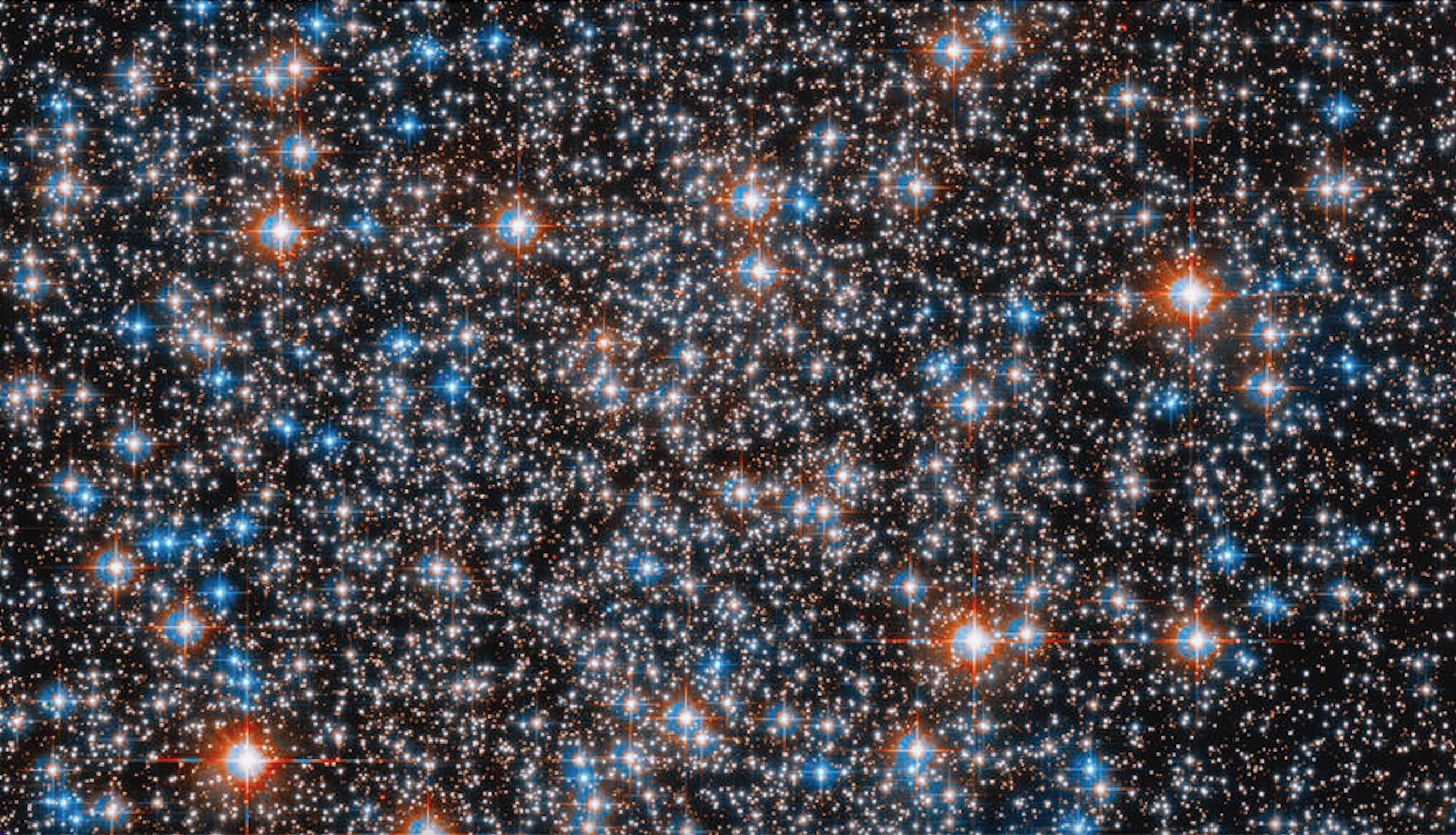
A distant cluster sparkles with ancient stars in a gorgeous new image from NASA's Hubble Space Telescope.
The dazzling Hubble photo shows just a pocket of Messier 55 (M55), a globular cluster in the constellation Sagittarius (The Archer) that harbors about 100,000 stars. Astronomers say some of these stars, especially in M55's center, twinkle with changing brightness.
The combined gravity of M55's stars pulls the cluster into a spherical shape, a common trait shared by more than 150 such objects that occupy the Milky Way galaxy.
Related: The best Hubble Space Telescope images of all time!
The combined gravity of M55's stars pulls the cluster into a spherical shape, a common trait shared by more than 150 such objects that occupy the Milky Way galaxy.
Astronomers know little about the elusive M55 itself, which is about 17,000 light-years from Earth. The cluster is 100 light-years in diameter and spans about two-thirds the width of a full moon as seen from Earth. M55 is relatively bright, but for observers in the Northern Hemisphere, Earth's atmosphere obscures the cluster, so its stars are tough to spot.
"While Messier 55 is large and reasonably bright, it is lacking a dense core and many of its stars are quite faint, making it hard to observe in non-optimal conditions," NASA representatives wrote in an image description published on Friday (March 17).
When the French astronomer Nicolas Louis de Lacaille discovered M55 in 1752, he noted that the cluster "resembles an obscure nucleus of a big comet." Soon, the hunt was taken up by Charles Messier, a French astronomer and the publisher of the famous Messier catalog of 110 deep-sky objects — one of which is M55.
It took Messier 26 years to find the cluster, and when he finally spotted it in 1778 from his observatory in Paris, he described it as "a nebula which is a whitish spot, of about 6′ extension, its light is even and does not appear to contain any star."
The Hubble Space Telescope, however, faces none of the challenges that those Earth-based observers did. The observatory has a splendid seat from its orbit above Earth's atmosphere to snap the clearest views of M55, and can even resolve its individual stars.
The telescope, which launched to Earth orbit in 1990 and is still going strong, has clicked sparkling pictures of at least 93 of the 110 Messier objects to date.
Follow Sharmila Kuthunur on Twitter @Sharmilakg. Follow us @Spacedotcom, or on Facebook and Instagram.







